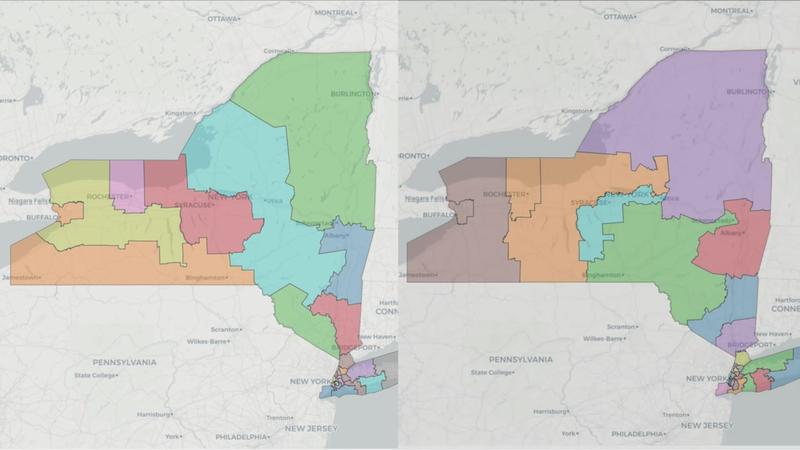A look at Democratic and Republican redistricting plans for New York
ROCHESTER, N.Y. (WHEC) — New York voters are getting a first look at what the future of electing their members of Congress, the state Assembly and the State Senate could look like, and it’s already a clash of plans in partisan competition.
On Wednesday the state’s new Independent Redistricting Commission released its recommendations with commission members promising to keep working for all voters.
"We made a commitment to upstate New York that they were not going to be alone in this adventure. And we are on it,” said commission member Elaine Frazier.
The commission unveiled its decision with plenty of second thoughts.
"I can’t help but be disappointed and regret the fact that we were not able, as a commission, to put a single product together,” said commission member and State Senator Jack Martins.

[News10NBC]
Instead of one nonpartisan recommendation for redrawing the state’s election districts for the Assembly, the Senate and Congress, the commission released two, one favored by its Republicans and one by its Democrats.
"People tend to think an ‘independent commission’ means that it’s independent from partisanship,” observed redistricting consultant and News10NBC political analyst Kate Donovan. “But, really, it means that it’s independent from the legislature so… there are Republicans and Democrats and they have preferences on that commission.”
Since the 2020 Census, New York is losing one seat in congress so the new maps include fewer congressional districts.
Democrats like 25th district Rep. Joe Morelle are in solidly Democratic districts like Rochester, “District B” in the Democrats’ map, as well as Brian Higgins of Buffalo and Paul Tonko of Albany seem secure because both Republican and Democratic versions keep their districts much the same.
The narrowly republican 22nd district around Syracuse is a different story. The Democrats proposed new “District T” groups.
"Especially upstate where communities of interest were entirely ignored or split,” exclaimed Redistricting Commission member Charlie Nesbitt to fellow commissioners, "they can’t want to have… Turn this into a gerrymandering exercise of another kind.”
Both plans also create likely Republican districts, like the Democrats’ “District Y” which is now largely Rep. John Katko’s territory.
The Republicans’ plan creates solid red zones like the “GLOW” district, Genesee, Livingston, Ontario and Wyoming counties, and the “STHPENNBRDR” district which covers much of the Southern Tier along the Pennsylvania state line, now including much of Rep. Tom Reed’s territory.
Committee members and lawmakers worry about the committee failing to unite around a single plan on its first go-round.
“The current Independent Redistricting Commission, that was only created nine years ago,” noted 133rd district Republican Assemblywoman Marjorie Byrnes. “First time it’s been used. And it may be summarily bounced out of existence before it was ever given a shot.”
Before any plan by the commission goes to the legislature, it must now go through a new round of retooling and comment from people around the state in a series of listening sessions.
The first two will be in Buffalo on Oct. 20 and in Rochester on Oct. 28.